March 13, 2023
Nopales Harvest & Blooming Lollapalooza
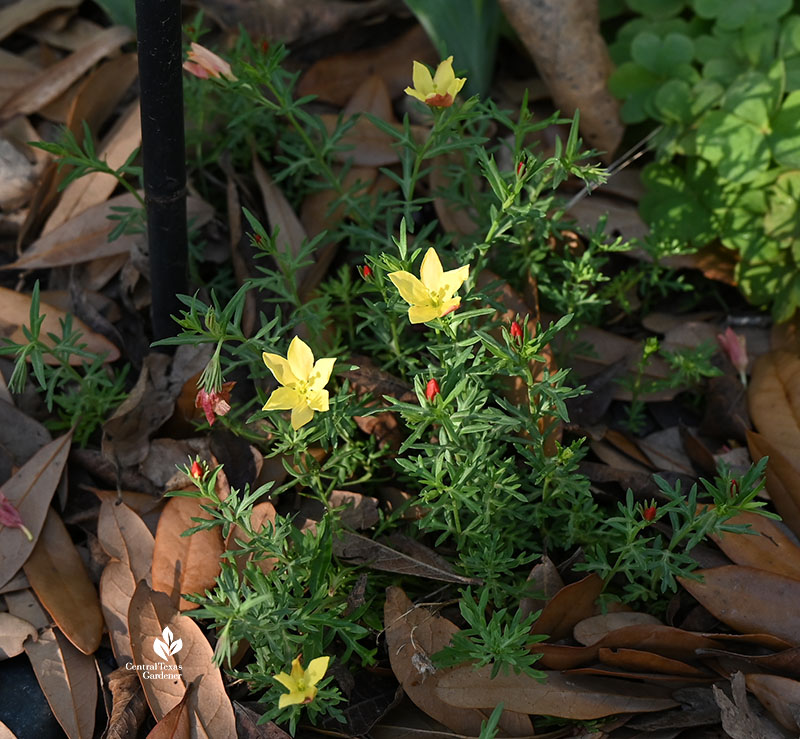
What a little charmer! This tiny-leaved groundcover, Menodora heterophylla, was a new-to-me that I had to try when I discovered it at last fall’s Wildflower Center native plant sale. It loves dry part shade, and that I’ve got! Even as a new planting, it sailed through December’s freeze and February’s ice, never dropping a leaf.
One common name is “redbud” due to its teensy red flower buds that open to starry yellow. From Central Texas Gardener’s Facebook page, a San Antonio reader noted: “It’s one of the few things that’s around in winter (and now spring), thriving in the dry, sandy, neglected, and otherwise completely bare dirt of some San Antonio parks. An early bloomer providing a much-needed nectar source for early pollinators. Natives for the win – again!” Another reader often spots it under mesquite trees. Check out the Wildflower Center’s spring sale plant list. And Barbara Wright at Wright’s Nursery in Briggs often carries it.
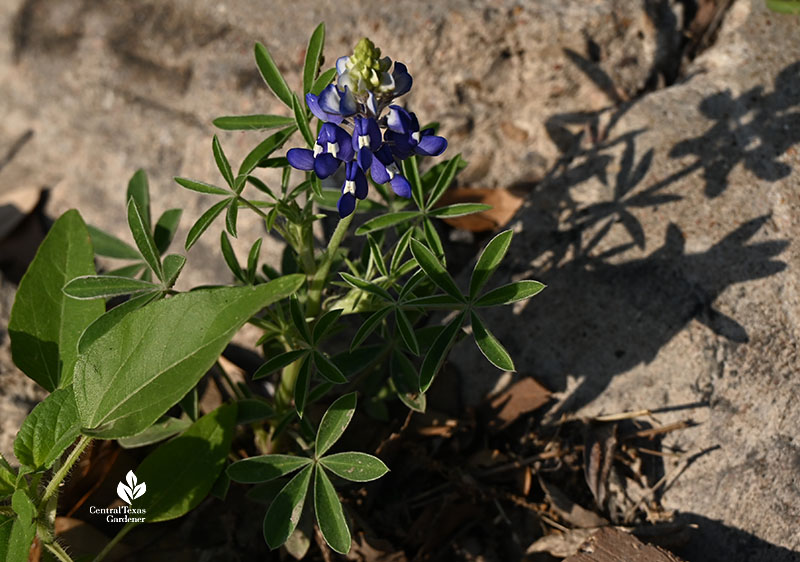
Tough as Texas weather and full of grit (at least seeded in grit), my curbside delivery bluebonnet joined its fellow state flowers blanketing us in blue.
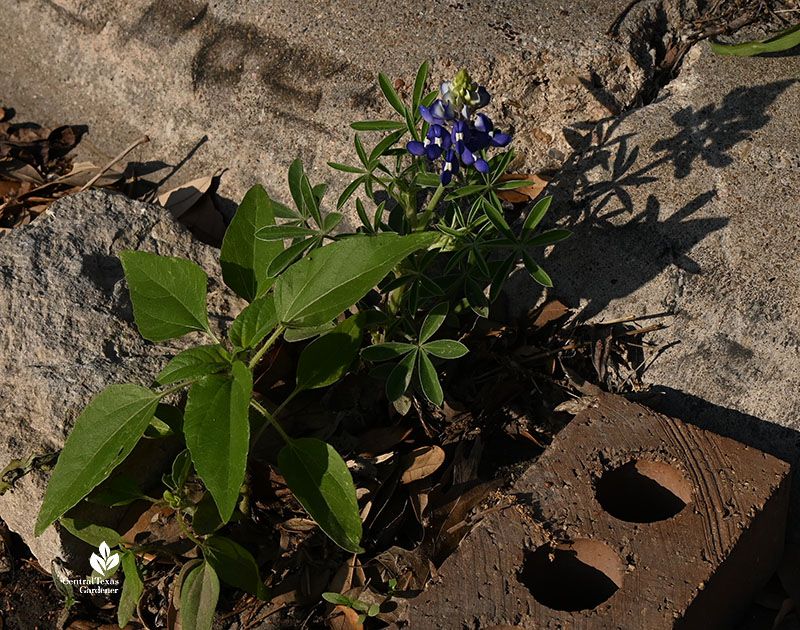
It’s been gutter-flooded, freeze-nipped, and dipped in ice, so I took no chances that it would end up squashed. A fellow self-seeded sunflower keeps it company, gearing up for its pollinator curb appeal in a few months.
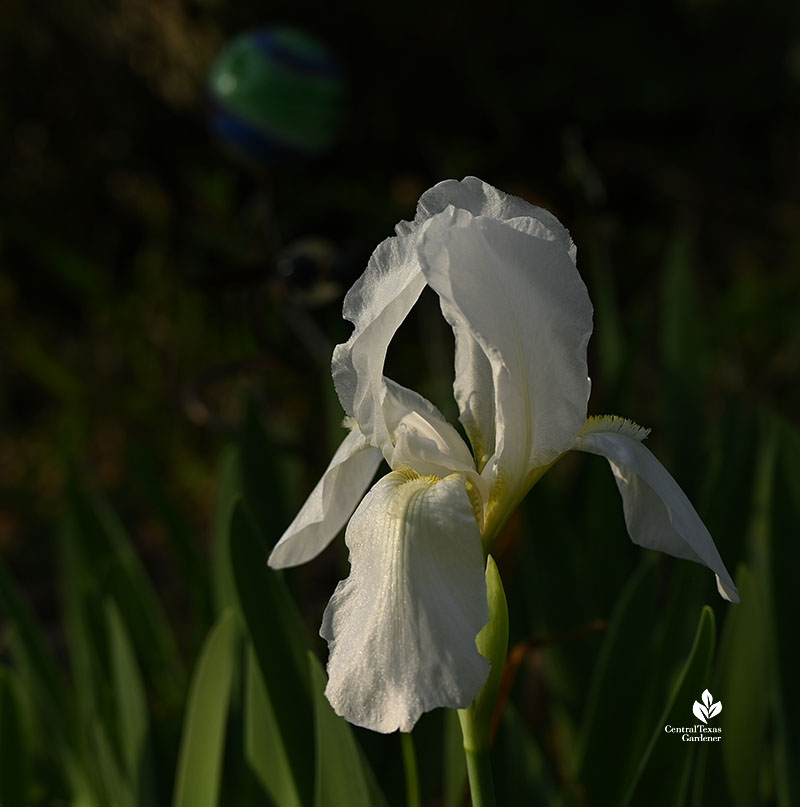
My white bearded irises (Iris albicans), often dubbed the cemetery iris or grandma’s flags, are just as tenacious. Divided and passed along across cultures and centuries, their evergreen foliage and spring flowers persist in drought, flood, and freeze. Fertilizer, why bother?
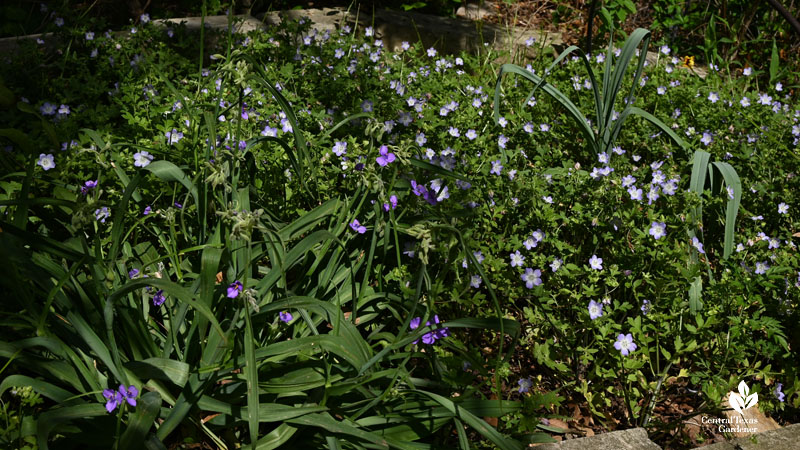
Native baby-blue-eyes (Nemophila menziesii) ramped up this week. A self-seeding annual for part shade, they chose this spot to settle en masse. Spiderwort (Tradescantia gigantea) contributes hues of blue in this stone raised bed. At the far right, strappy elephant garlic foliage reminisces when I grew cool weather edibles here—obviously a reliable comeback that I’ll harvest when the leaves brown up. I always leave a few bulbs underground for next year.
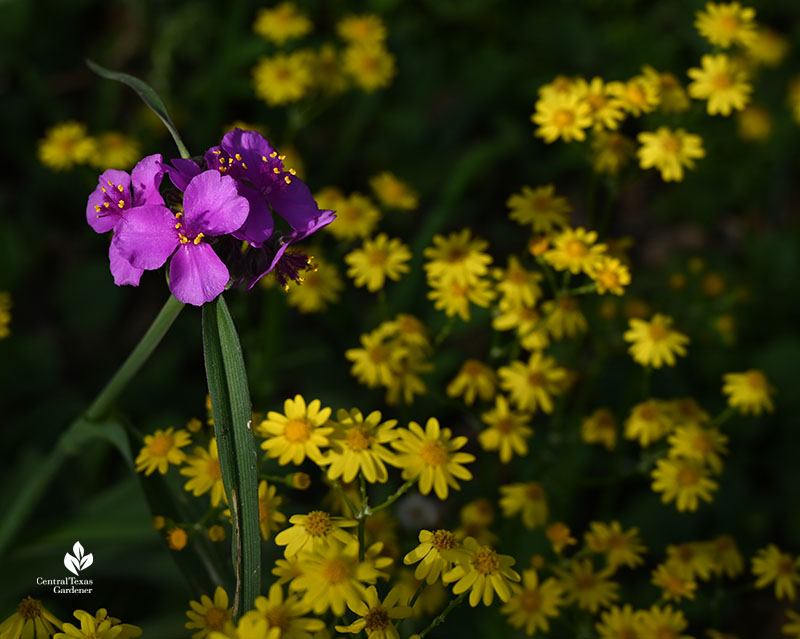
Always I count myself lucky that this spiderwort seeded itself next to golden groundsel.
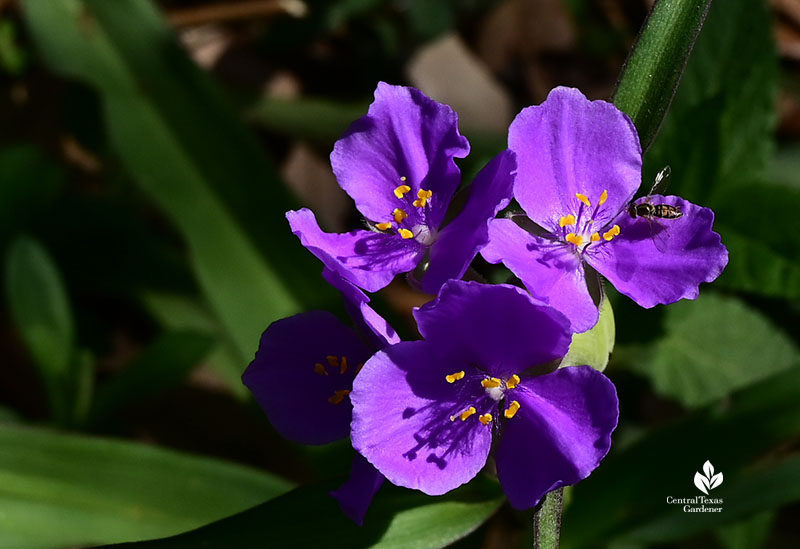
Beneficial pollinators like hover fly whip from one plant to one another, perhaps making up a little for the famine weeks.
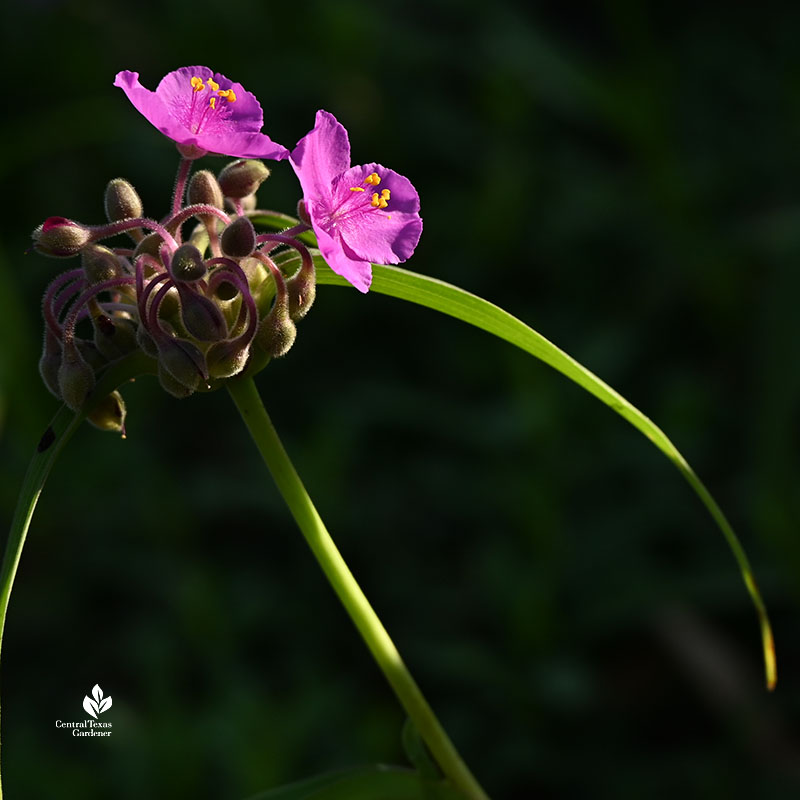
Viewers asked how to divide spiderworts. Like the baby-blue-eyes, they will freely scatter themselves when their seed heads dry. Collect them to disperse in other areas or save for fall planting. I carry a bucket and clip them into it. To save for later, let them completely dry indoors before storing.
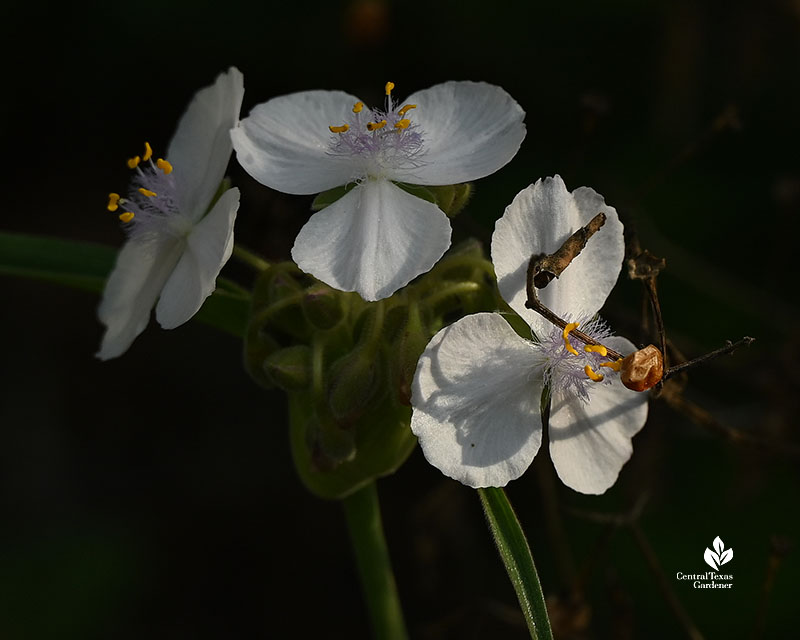
Since seeds are hit or miss, you can also divide the thread-like root mass once the foliage browns up.
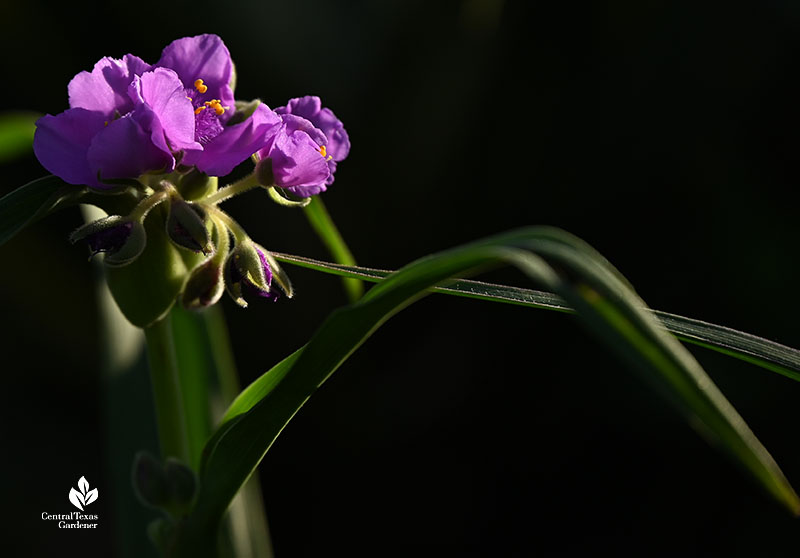
Historically, indigenous peoples used them for medicinal and cultural purposes. All parts of spiderwort are edible, valued by contemporary foragers (even in our backyards). When Alexis Nikole Nelson @blackforager was in Austin recently, she made a gorgeous drink with our native T. giganteas.
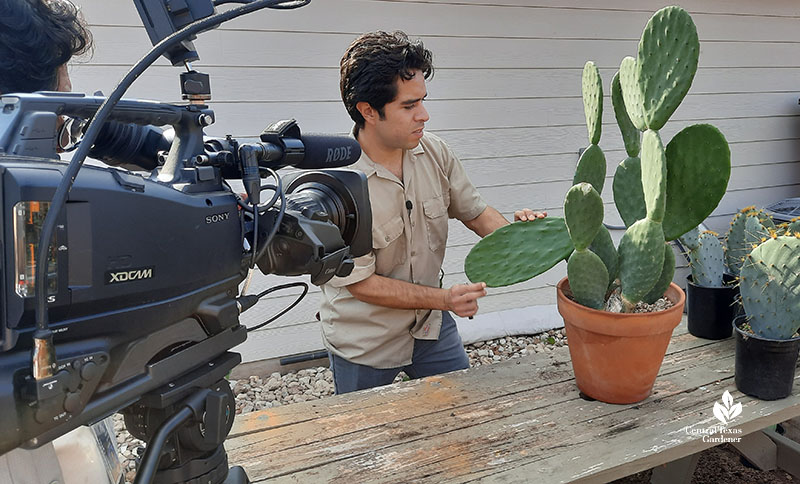
It’s easy to multiply our prickly pears (Opuntias), too. And, if they suffered freeze or other physical damage, we can remove healthy pads (nopals) and start another plant. Simply dry them for a few days and plant in a gritty, well-drained soil mix for cactus and succulents.
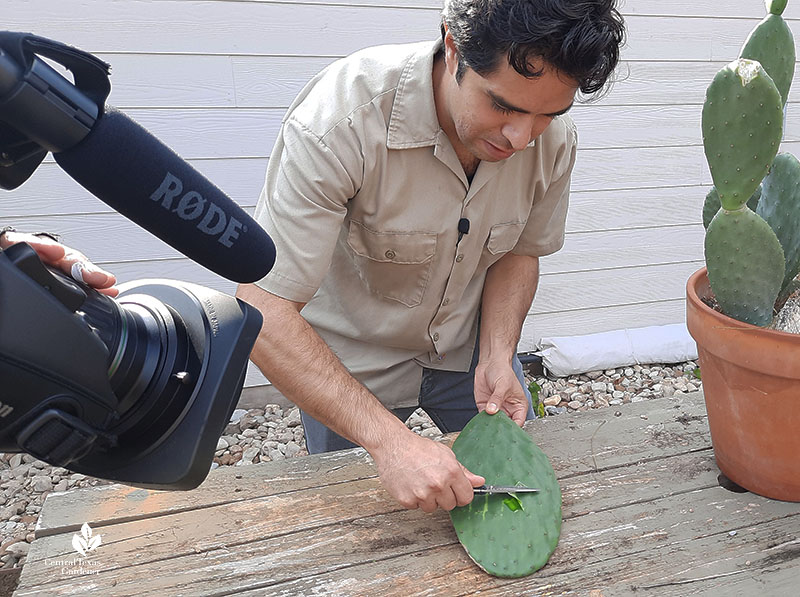
On our Hutto visit to Ashley Nava-Monteros and Carlos Monteros’s garden, he demonstrated how to harvest prickly pear pads (nopals) and prep for recipes.
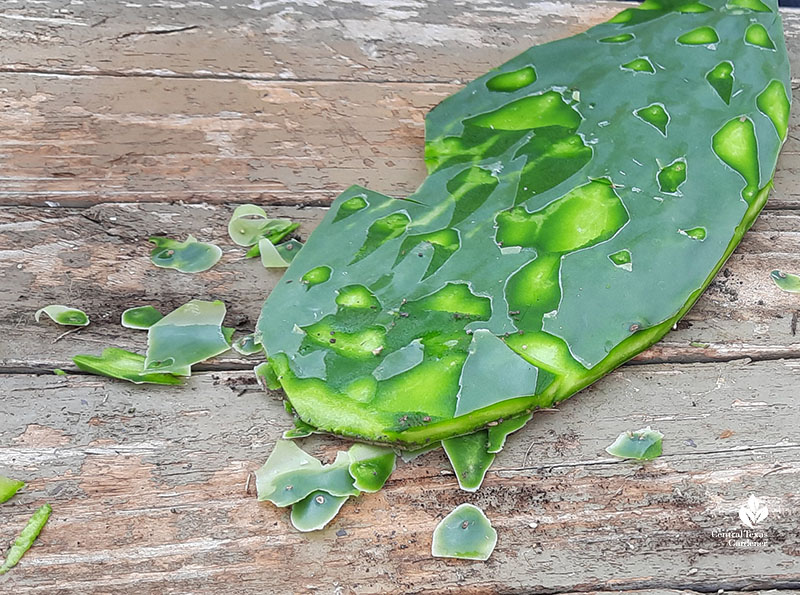
Sauté with eggs, boil, or eat fresh in a nopalito salad! Carlos didn’t use gloves for this quick demo, but it’s highly recommended, even with so-called spineless prickly pears.
Watch now!
Thanks for stopping by! Linda
tags:

